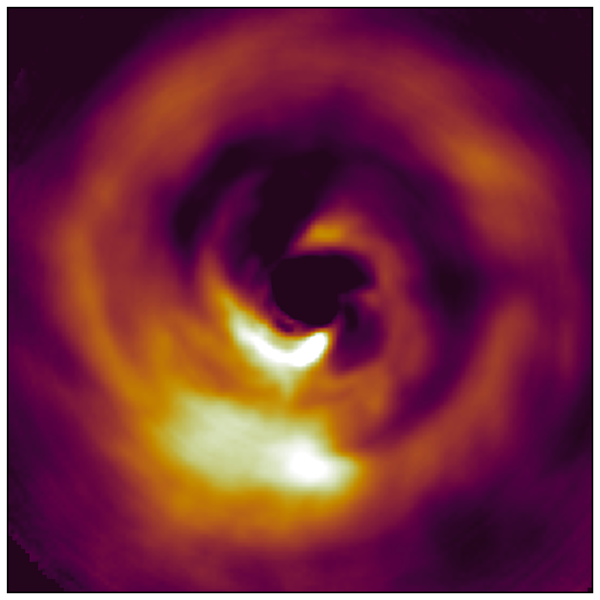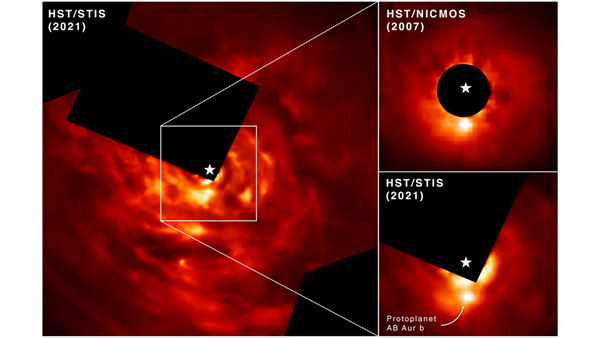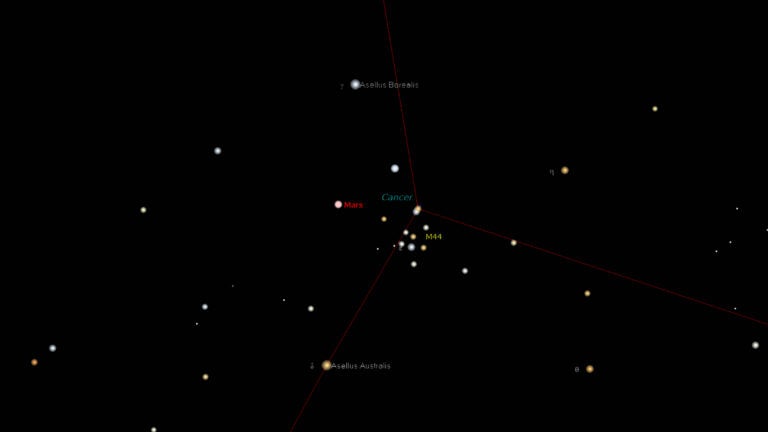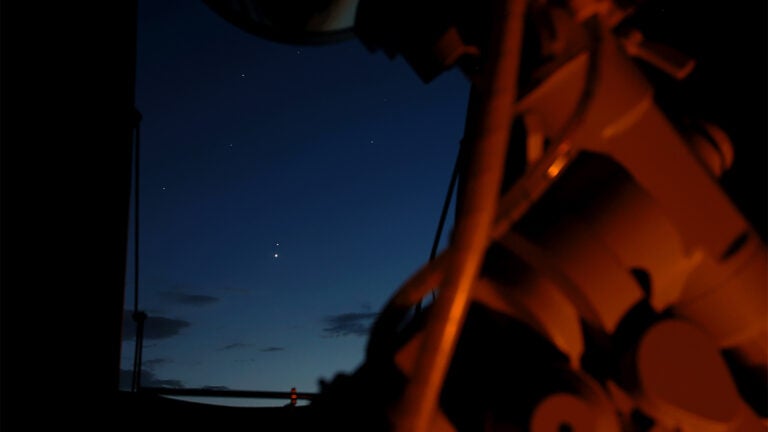This spectacular cosmic maelstrom swirling around a young star is giving birth to a planet roughly nine times as massive as Jupiter — and also causing astronomers to rethink how planets form in the first place.
The system is AB Aurigae, roughly 530 light-years away, and the nascent planet is the hot, glowing mass at the bottom of the image. The central star has been masked out by the instrument that snapped the image in 2021 at the 8.2-meter Subaru Telescope atop Maunakea in Hawaii. It’s one of the best photographs yet taken of a planet being born within a protoplanetary disk, the disk of leftover debris that surrounds young stars after they form.
Features in protoplanetary disks are hard to interpret, so astronomers went to the archives of the Hubble Space Telescope to look for older images of the system and had the venerable NASA observatory take fresh imagery, as well. The combination of this data, published April 4 in Nature Astronomy, allowed researchers to observe the orbital motion of the system over 13 years, confirming the status of the protoplanet, dubbed AB Aurigae B.
What makes this planet especially unusual is that it is forming at a great distance from its star — roughly 8.6 billion miles (14 billion kilometers), or over twice the distance of Pluto from our Sun. This is hard to square with the most widely accepted model of planet formation, called core accretion. In this scenario, gas giant planets come from humble beginnings, seeded by dust grains and pebble-sized bits of debris slowly glomming together. Eventually, they grow large enough to acquire a gravitational pull that can sweep up gas from the protoplanetary disk, forming the large, puffy envelopes of planets like Jupiter and Saturn.
But at AB Aur b’s vast distance from its host star, it’s unlikely there would be enough debris to form a large core in the first place. This makes the new observations powerful evidence for an alternate theory of planet formation, called disk instability. In this scenario, large clumps of gas in the swirling protoplanetary disk become unstable and collapse under their own gravity, forming planets directly in a process similar to how the stars of such systems form in the first place. The way the gas spirals in swirls and eddies in the wake of AB Aur b lends further credence to the idea.
“This new discovery is strong evidence that some gas giant planets can form by the disk instability mechanism,” said Alan Boss of the Carnegie Institution of Science in Washington, D.C., in a statement. “In the end, gravity is all that counts, as the leftovers of the star-formation process will end up being pulled together by gravity to form planets, one way or the other.”











